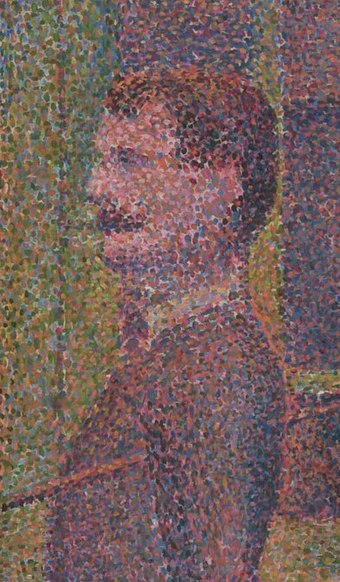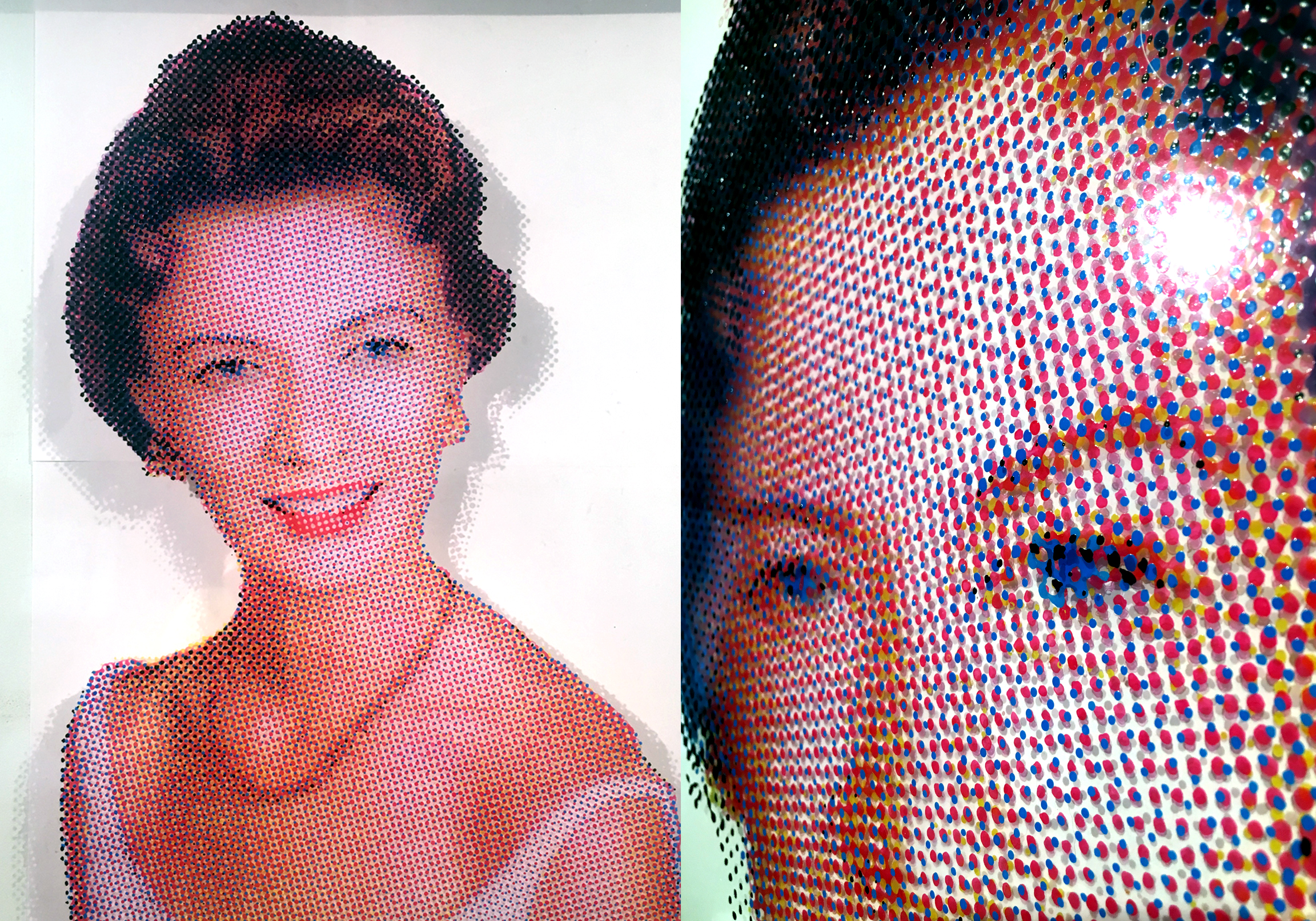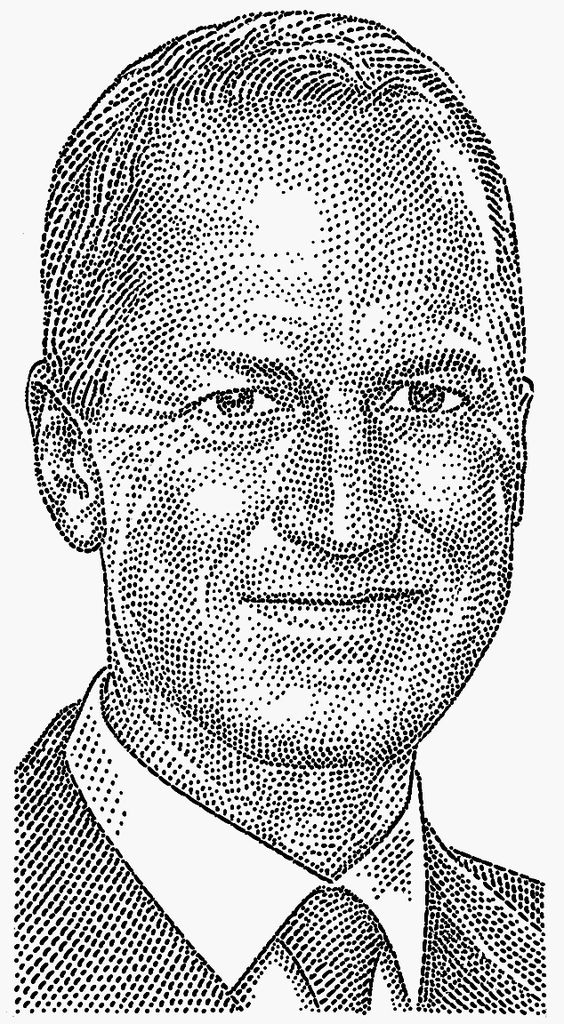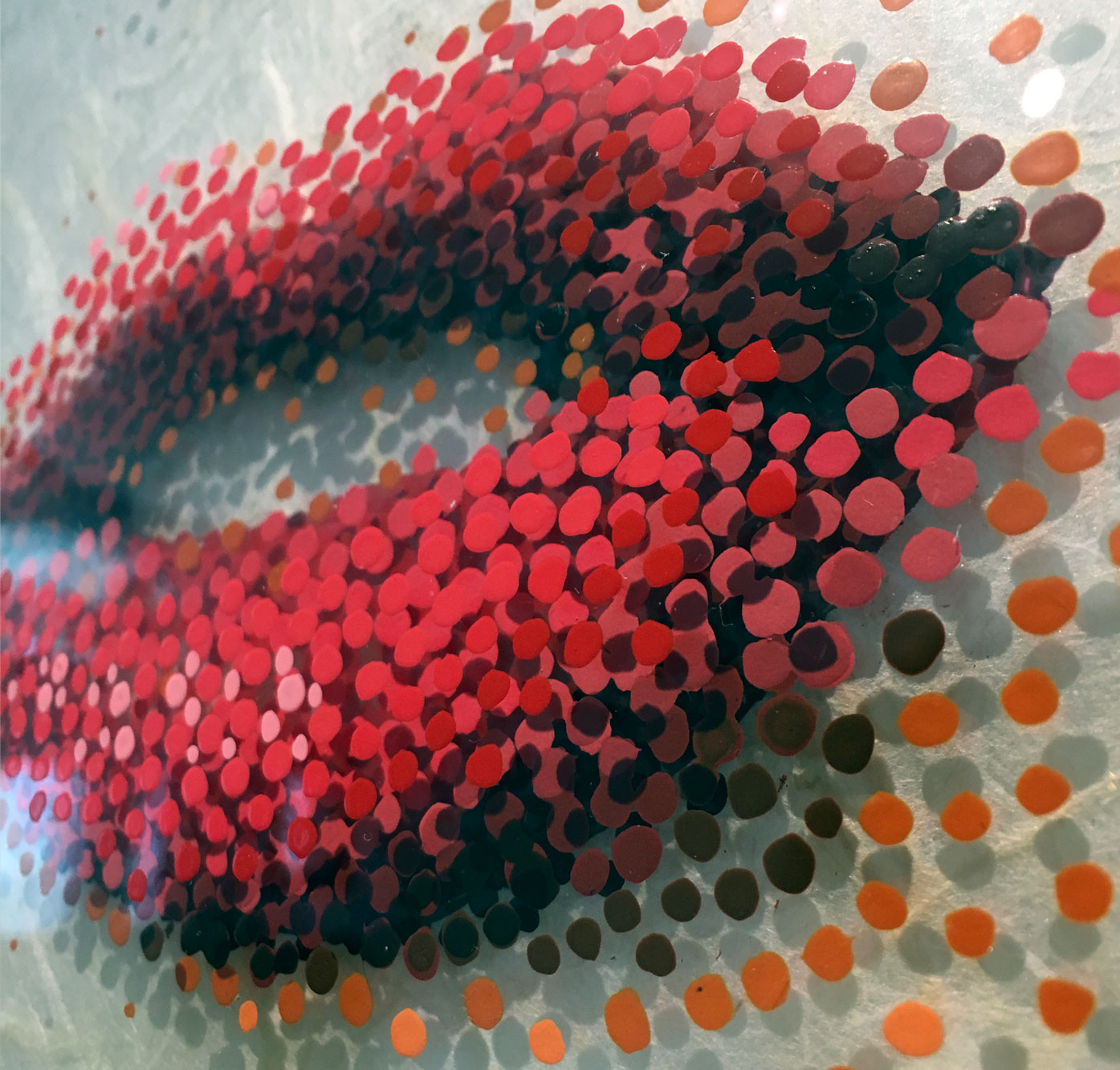Are my paintings examples of Pointillism? - 10/25/17.
No, not in the strictest sense.
I use dots for a different reason, and to a different effect than the Pointillist painters of the late 1800's.
The Pointillist painters were interested in using dots to visually mix colors. They used dots of different colors to simulate blended colors. For example, if dots of two colors are placed next to each other, from a distance they look like a third distinctive color. Here is a detail from Circus Sideshow (Parade de Cirque) (1889) by Pointillist painter Georges Seurat showing pointillism and color theory.

The theory behind Pointillism was the precursor to the modern day 4 color process printing used to reproduce color photographs in magazines and newspapers today. That technique uses dots of only four colors (CMYK), Cyan, Magenta, Yellow and Black to produce thousands of colors. Here is a painting I did using that 4 color process technique. I would say this is the only painting of mine so far that is a true example of the theory behind Pointillism.

Click/tap to see a large version of this image.
Is my use of dots like the stippling of tattoo artists and engravers?
Again, I use dots for a different reason, and to a different effect than the stippling of engravers and tattoo artists. Stippling is generally a shading technique. Stippling allows the artist to vary the density of shading very subtly to depict curved or irregular surfaces. A popular artist using stippeling today is Kevin Sprouls. He did stippled and hatched portraits known as hedcuts for The Wall Street Journal.

Not Pointillism. Not Stippling. What then?
I use dots because I am creating 3 dimensional paintings with many layers of clear plexiglass. I need to be able to see through one layer to the next layer, and to the next. The dots if spaced correctly only take up maybe 40% to 60% of an images surface area at most. This lets the viewer look through each layer to see the layer below it.
This layering creates actual foregrounds and backgrounds. Truly 3D. Each layer makes up a part of the whole image. The effect creates a 3 dimensional painting that moves and changes as the viewers perspective changes.
What do I call my paintings?
3 Dimensional Painting, or 3D Painting.

See more of this painting 'Hiogi Peak-A-Boo'